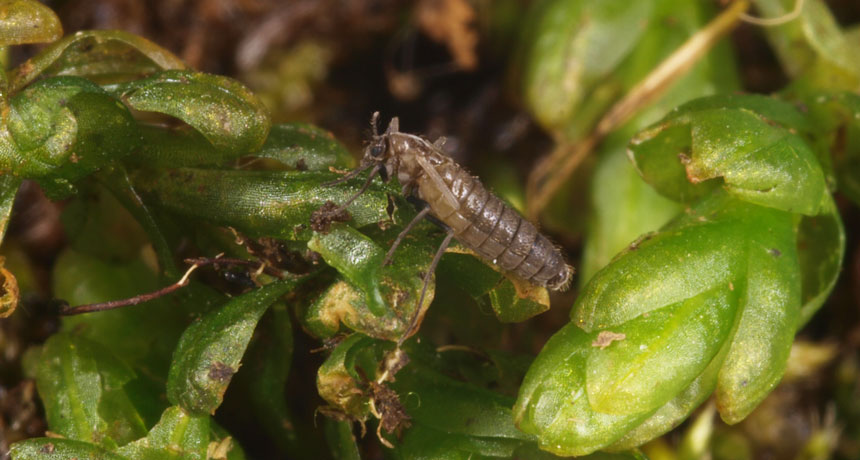Because I study soil, I talk a lot about the microscopic organisms that live in soil. But there are, of course, other, big animals that spend part of their year in Antarctica. Some people find these animals interesting, so I'll tell you about some of them. (But how could they be MORE interesting than springtails and midges?!?!)
The coolest diversity of animals that live on the Antarctic Peninsula are the birds, so I'll start by talking about those. There are actually quite a lot of birds that spend their summers in Antarctica! Here are a few that I think are the most interesting.
One of my favorite species is the giant petrel. I like them because they are so big! Their wing span is 6-7 ft. Their length wingtip-to-wingtip is bigger than many humans are tall! They are seabirds who eat fish, squid, penguin chicks or other birds... and generally anything they can fish out of the ocean.
 |
| My pictures of adult giant petrels aren't very good, but you can see lots of other pictures at eBird. |
 |
| A baby giant petrel, in a much better photo taken by Terri Nelson. |
Everyone's least favorite bird is the skua. Skuas are very aggressive. They are scavengers who eat whatever they can find, sometimes by stealing that food from others. They will dive at other birds carrying food to startle them into dropping it. They'll even do it to humans if you're outside carrying a sandwich! They are also very curious and will steal shiny objects, so they have been known to pull off metal tags, steal flagging that marks your research sites, and even steal your computer cables! They can be very pesky when you're trying to do science.
 |
A skua stalking around our field camp, looking for food to steal. You can see more pictures at eBird. | Skuas are much less mean when they are this size!
|
|
Skuas are also very good parents. They will attack anyone who tries to come near their nests! They nest on the ground and the eggs and chicks are very well camouflaged, so you might not even know you're near one. But you'll know when a skua dives at your head with its very sharp beak! They don't want anybody getting near their babies.
Another interesting bird is the snowy sheathbill. They are kind of ugly, because they don't have feathers on their face. Like vultures, they eat carrion (dead animals), feces, and other things they can scavenge. That means they have to put their faces in some pretty gross places! You probably haven't heard of a sheathbill before, because there are only two species of them, and they both live around Antarctica or the islands just to the north.
 |
Snowy sheathbills photographed by Terri Nelson. You can see her scientific illustrations of sheathbills and other birds here. You can also see other pictures of them at eBird.
|
Of course the most famous Antarctic birds are penguins. Let's not forget that these are birds, just birds that can't fly! Their body shape makes them good at swimming, but very goofy on land. There are three species that live on the Peninsula where we work: chinstrap, gentoo, and Adélie penguins. Penguins are the most stinky of the Antarctic birds. They eat krill, which makes their poop smell very "fishy". They poop all around their nests, so rookeries are covered in poop (called guano), and boy does it smell bad!
 |
| Chinstrap penguins have that name for an obvious reason! |
 |
| Gentoo penguins have the white splotch on their head. |
 |
| Adélie penguins have the white ring around their eye. |
So there is your introduction to a few of the birds that live on the Antarctic Peninsula. They live alongside other marine animals like seals and whales, but we will talk about those another time.





































